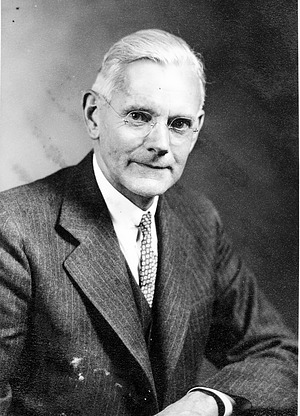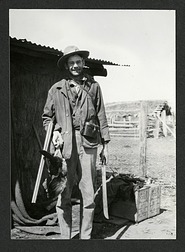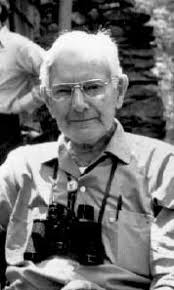From his earliest years, Alexander Wetmore knew he wanted to be an ornithologist. And until his death at the age of 92, he lived up to that expectation. No wonder he is known as the 20th Century’s “dean of American ornithologists.”

Frank Alexander Wetmore was born in a small town in central Wisconsin on June 18, 1886 (died 1978). When his mother gave him a guide to bird identification at age five, Wetmore was hooked. He began making serious field notes about birds a few years later, and, when just 13 years old, published his first paper in the magazine Bird Lore—“My experience with a red-headed woodpecker.”
His experiences with birds grew exponentially. While a student at the University of Kansas, he began working as an assistant curator in the college’s museum. During summers he worked for the U.S. Biological Survey in Wyoming and Alaska, and then spent a year studying the birds of Puerto Pico and nearby islands. After graduation in 1912, he worked full-time for the US Biological Survey (now the US Fish and Wildlife Service), performing fieldwork on birds throughout the Americas and in the Pacific Islands. While working, he completed M.S. and Ph.D. degrees at George Washington University.
In 1924, he moved to the Smithsonian Institute, where he stayed for 28 years until his retirement in 1952. He moved steadily up the ranks into administrative roles; although he disliked administration, he proved good at it—methodical, logical, patient, dauntless. The depression and war years were a tough time for the Smithsonian, plagued by low budgets, insufficient staff, and deteriorating physical facilities. Wetmore’s rock-solid leadership through those times was valued, resulting in his being named Secretary of the Smithsonian Institution in 1945 .

As Secretary, he oversaw substantial changes (although he made them purposefully and conservatively). He expanded the coverage of the museums, for example, opening an aviation museum that we now know and love as the Air and Space Museum. He acquired a tropical research station in Panama, now one of the premier biological field stations in the world. He helped transform the museum’s exhibits from stale to engaging. He lobbied congress persistently for capital funding that eventually came through—and today we enjoy those labors in the great national museums of the Washington Capitol Mall.
But it is his work as an ornithologist that has earned him worldwide scientific acclaim. He never stopped his research, both during his leadership of the Smithsonian and after his retirement in 1952. He became the world’s foremost expert on fossil birds, basically establishing the field of ornithological paleontology. He continued field work across the world, but especially in Panama. He published three of four volumes of his monumental work, The Birds of the Republic of Panama (the fourth volume has been completed in his honor). His taxonomic work was enormous, naming and describing 189 new bird species and revising bird systematics in his book, A Classification for the Birds of the World. In all he published more than 700 books and papers. He donated 26,058 bird and mammal skins, 4,363 anatomical specimens, and 201 groups of bird eggs to the Smithsonian. His list of awards and recognition seems endless, but the most relevant may be this: his colleagues have named 56 species of various taxa in his honor.

He was, as is said of few, a man for all seasons. The Smithsonian described him as “a quiet and gentle man,… as at home in a remote Panamanian village as the halls of the US Congress.” His successor at the Smithsonian, S. Dillon Ripley, described him as calm, gentle, meticulous, with total “absence of self-importance.” May we all be remembered so kindly.
References:
Ripley, S. Dillon and James A Steed. 1987. Alexander Wetmore, 1886-1978, a Biographical Memoir. National Academy of Sciences, Washington, DC. Available at: http://www.nasonline.org/publications/biographical-memoirs/memoir-pdfs/wetmore-alexander.pdf. Accessed March 2, 2020.
Smithsonian Institution Archives. Alexander Wetmore, 1886-1978. Available at: https://siarchives.si.edu/history/alexander-wetmore. Accessed March 2, 2020.
Washington Post. 1978. Alexander Wetmore, 92, Dies. December 9, 1978. Available at: https://www.washingtonpost.com/archive/local/1978/12/09/alexander-wetmore-92-dies/389d9760-2a3e-459c-bfc0-1491a4ca8443/. Accessed March 2, 2020.
